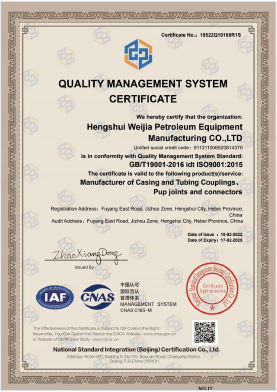- Afrikaans
- Albanian
- Amharic
- Arabic
- Armenian
- Azerbaijani
- Basque
- Belarusian
- Bengali
- Bosnian
- Bulgarian
- Catalan
- Cebuano
- Corsican
- Croatian
- Czech
- Danish
- Dutch
- English
- Esperanto
- Estonian
- Finnish
- French
- Frisian
- Galician
- Georgian
- German
- Greek
- Gujarati
- Haitian Creole
- hausa
- hawaiian
- Hebrew
- Hindi
- Miao
- Hungarian
- Icelandic
- igbo
- Indonesian
- irish
- Italian
- Japanese
- Javanese
- Kannada
- kazakh
- Khmer
- Rwandese
- Korean
- Kurdish
- Kyrgyz
- Lao
- Latin
- Latvian
- Lithuanian
- Luxembourgish
- Macedonian
- Malgashi
- Malay
- Malayalam
- Maltese
- Maori
- Marathi
- Mongolian
- Myanmar
- Nepali
- Norwegian
- Norwegian
- Occitan
- Pashto
- Persian
- Polish
- Portuguese
- Punjabi
- Romanian
- Russian
- Samoan
- Scottish Gaelic
- Serbian
- Sesotho
- Shona
- Sindhi
- Sinhala
- Slovak
- Slovenian
- Somali
- Spanish
- Sundanese
- Swahili
- Swedish
- Tagalog
- Tajik
- Tamil
- Tatar
- Telugu
- Thai
- Turkish
- Turkmen
- Ukrainian
- Urdu
- Uighur
- Uzbek
- Vietnamese
- Welsh
- Bantu
- Yiddish
- Yoruba
- Zulu
Exploring the Benefits and Applications of API Tubing Couplings in Oil and Gas Industry
Understanding API Tubing Couplings A Crucial Component in Oil and Gas Operations
In the oil and gas industry, the efficient and safe transportation of fluids is paramount. One of the critical components facilitating this process is the tubing coupling. API (American Petroleum Institute) tubing couplings play a significant role in connecting sections of tubing, ensuring that the flow of oil and gas is maintained without leaks or failures. This article delves into the importance, specifications, and applications of API tubing couplings in the exploration and production sectors.
What are API Tubing Couplings?
API tubing couplings are mechanical fittings designed to join lengths of tubing together. They are manufactured according to the strict standards set by the American Petroleum Institute, which ensures consistency, reliability, and safety in operations. These couplings are typically used in drilling operations and production wells, connecting various lengths of tubing that transport oil, gas, or other fluids from deep within the earth's crust to the surface.
Types of API Tubing Couplings
API tubing couplings come in various types, each catering to specific operational needs. The most common types include
1. EUE (External Upset End) This type of coupling has an external upset that helps create a stronger joint by increasing the surface area for welding. EUE couplings are often used in production tubing applications.
3. Long and Short Couplings These refer to the length of the coupling itself. Longer couplings provide more junction surface area, which can be beneficial in high-stress applications.
Specifications and Standards
API tubing couplings are manufactured to meet specific standards, such as API 5CT, which outlines the requirements for steel pipes and couplings used in the oil and gas industry. Couplings must undergo rigorous testing to ensure they can withstand extreme pressures and temperatures. Key specifications include
api tubing couplings

- Material Composition Most couplings are made from carbon steel or other high-strength alloys to endure harsh environmental conditions.
- Dimensions Couplings must conform to precise dimensional standards to ensure compatibility with the tubing they are connecting.
- Thread Types Proper threading is essential for creating a secure seal. API specifies different thread types, including IF (Internal Flush) and NC (National Coarse), which affect how the coupling joins with the tubing.
Applications in the Oil and Gas Industry
The primary application of API tubing couplings is in drilling and production operations. They are used to connect tubing strings that transport hydrocarbons from the reservoir to the surface. This transport must occur under high pressure, so the sealing integrity of couplings is vital. Couplings can also play a role in land-based and offshore operations, each presenting unique challenges and requirements.
In addition to their role in connecting tubing, couplings can be used in various other contexts, such as
- Workover Operations When maintenance is needed, coupling connections allow for the easy addition or removal of tubing sections without significant disruption.
- Enhanced Oil Recovery API couplings help facilitate the injection of water, steam, or gases used to enhance oil recovery rates.
Conclusion
API tubing couplings are indispensable in the oil and gas industry, ensuring the seamless and safe transport of hydrocarbons from the reservoir to the surface. Understanding their types, specifications, and applications is crucial for engineers and operators contributing to efficient drilling and production processes. As technology in the drilling sector continues to evolve, the design and functionality of tubing couplings will also adapt, constantly improving the safety and efficiency of oil and gas operations worldwide.
-
Well Casing Extension Couplings – Applications and InstallationNewsJun.06,2025
-
Types of Crossover Subs in Drilling & CompletionNewsJun.06,2025
-
Key Features of High-Quality Tubing Pup JointsNewsJun.06,2025
-
Installation and Maintenance Tips for Steel Couplings for PipeNewsJun.06,2025
-
How to Select the Right Pup Joint for Oil & Gas OperationsNewsJun.06,2025
-
Applications of Stainless Steel Pipe CouplingsNewsJun.06,2025







